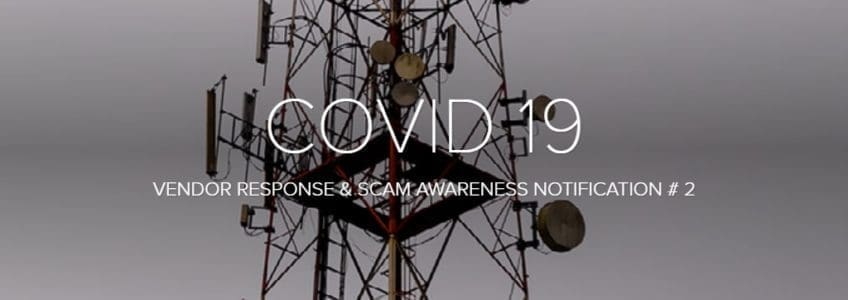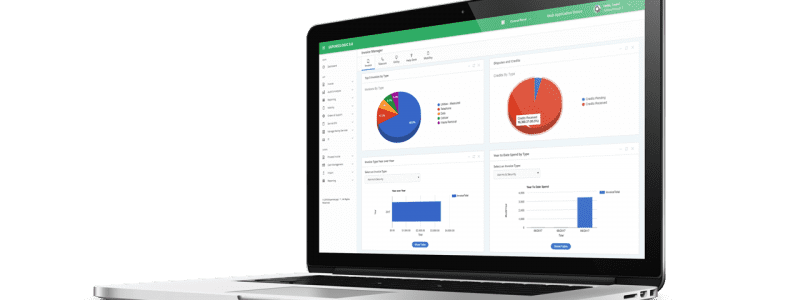Diving Into Your Trash
Diving Into Your Trash
Waste management stands as a sizable industry that is essential for every company. In the United States alone, a staggering 624,700 metric tons of trash get discarded daily, incurring an annual expense of approximately $11 billion. Businesses shoulder a substantial 80% of these expenses. Across the board, companies are actively seeking strategies to curtail costs while simultaneously minimizing waste generation and maximizing recycling opportunities wherever feasible.
Invoices and Fees
The initial phase of cost reduction in waste management involves scrutinizing usage patterns and existing services. Numerous companies grapple with expensive monthly waste services, often burdened by additional charges appended to their regular service bills. These fees often include:
- Management fees
- Environmental fees
- Gas surcharge fees
- Lock fees
- Extra Pick-up fees
- Contamination fees
- Overage fees
- Locked gate fees
By comprehending the invoice details and extra fees, you can effectively optimize your cost savings.
Questions to Ask
Some of the above fees can be eliminated or negotiated just by asking the right questions including:
- Do we need a separate bin for environmental waste? This could involve quick-service restaurants discarding spoiled food or spent grease.
- Can we recycle cardboard, plastic, and metal? Breaking down boxes for recycling might save both money and the environment.
- Is there a vendor we can use to collect scrap metal? This move could cut costs for larger roll-off bins and potentially lead to rebates.
- Are any bins situated behind locked gates? If trash collection is hindered due to inaccessibility, expect additional fees. To avoid this, place bins outside locked areas or coordinate gate access on pickup days.
- Are extra pickup fees a routine on your invoices? A quick review of the invoice can help resolve this by adjusting bin size or pickup frequency.
- Is there a corporate contract governing waste services? Ensure your team is aware of this contract to benefit from agreed-upon rates when ordering services.
Given the array of questions, it’s evident that most companies will require support in overseeing trash invoices and managing multiple service providers. Generating detailed, precise information crucial for optimal business decisions demands dedicated time and meticulous attention to detail from a skilled team.
Problems with Billing Complexity
The billing intricacies present a convoluted mix of charges that necessitate monthly and long-term analysis to pinpoint the most optimal services at the most favorable prices. Monthly invoices might vary, with additional charges appearing one month and none the next, leading to potential confusion. It’s crucial to meticulously identify each charge on the invoice every month to ensure informed business decisions for each location.
Vendors contribute to this complexity by offering multiple trash haulers within a single area. This approach proves more advantageous than having only one hauler since multiple options enable bidding and price competition. However, managing these multiple vendors requires a dedicated effort and a specific finesse to navigate pricing and negotiate contract terms effectively.
Optimization Solutions with RadiusPoint
Having a partner who can break down the invoice monthly is critical to effectively managing your trash or waste services and meeting your sustainability goals. RadiusPoint’s Waste Optimization process involves a deep dive into the waste invoices and current business programs and policies to provide a multi-point approach to managing waste services. This inventory and audit process delivers an environmentally responsible waste management program that assists in reaching waste initiatives and provides unmatched value.
RadiusPoint’s optimization involves investigating services with the current vendor and determining best practices to provide a cost-saving program to our clients. Many multi-location organizations have ordered services as needed with no thought given to contract terms, bin size, or the frequency of pick-up. All of these factors determine the monthly cost and could result in huge savings if managed with cost savings, efficiency, and program goals in mind.
During our inventory and audit of the waste services, RadiusPoint would:
- Obtain a copy of the vendor’s current contract.
- Validate the contract rates against the current invoice.
- Comparison of services across all sites for any anomalies.
- Identifying any overage charges or other charges beyond the normal pick-up charges.
- Identifying better rates for those locations not under contract.
- Identifying better rates and possible early termination penalties, if applicable, for those locations under contract.
- Identify and recommend service changes to eliminate overage charges.
- Provided consolidated report for Request for Proposal (RFP).
- Provide analysis once the RFP is returned to show savings.
- Assist with contract negotiations for each contract or global contract.
- Assist with issues that arise at the location during the term of the agreement.
Once the inventory and audit is complete, RadiusPoint employs our exclusive software, ExpenseLogic, to handle and settle the monthly invoice. Simultaneously, continued auditing is conducted to guarantee precise billing according to contracted rates.
Connect with us to learn how RadiusPoint can support you in achieving your business’s waste service savings goals.
The Future of Cost Optimization: TEM Services are Leading the Way
How RadiusPoint Telecom Expense Management Services are Leading the Way
As RadiusPoint Telecom Expense Management (TEM) services continue to revolutionize cost optimization in the telecom industry, businesses are now equipped with the tools they need to stay ahead of the game. With its cutting-edge technology and innovative solutions, RadiusPoint has positioned itself as a leader in helping companies streamline their telecom expenses while achieving significant cost savings.
In this article, we will delve into the future of cost optimization and how RadiusPoint TEM services are paving the way for businesses to optimize their telecom expenses like never before. By leveraging their extensive experience and industry knowledge, RadiusPoint provides customized solutions tailored to each client’s unique needs.
With cost optimization becoming increasingly crucial in today’s competitive landscape, businesses need a reliable partner like RadiusPoint to navigate the complexities of managing telecom expenses. Their proactive approach, coupled with their innovative software, helps businesses identify potential areas of cost savings and implement effective strategies to optimize their telecom spend.
Stay tuned as we explore how RadiusPoint TEM services are leading the way in cost optimization and discover how your business can benefit from their expertise.
The challenges of cost optimization in telecom expenses
Cost optimization plays a vital role in the success of any business. In today’s highly competitive market, where every penny counts, companies are constantly seeking ways to reduce expenses and increase profitability. Telecom expenses, in particular, can be a significant drain on a company’s resources. With the increasing reliance on telecommunications for business operations, companies must optimize telecom spend to remain competitive.
Effective cost optimization allows businesses to allocate their resources efficiently, ensuring that every dollar spent delivers maximum value. By identifying and eliminating unnecessary expenses, businesses can free up capital for investments in growth opportunities, product development, and innovation. Cost optimization also helps businesses improve their bottom line, increase profitability, and enhance their overall financial health.
How RadiusPoint’s TEM services work
Cost optimization in telecom expenses presents unique challenges for businesses. The telecom industry is complex, with multiple service providers, various billing structures, and a wide range of services and technologies. Managing and controlling telecom expenses can be a daunting task, especially for businesses with multiple locations or a large number of employees.
One of the main challenges in TEM is the lack of visibility into telecom spend. Without a centralized system to track and monitor expenses, businesses may struggle to identify inefficiencies and cost-saving opportunities. Additionally, the ever-evolving nature of the telecom industry means that businesses need to stay up-to-date with the latest technologies, services, and pricing plans to ensure they are getting the best value for their money.
Another challenge is the complexity of telecom invoices. Telecom bills can be confusing, with multiple line items, different rates, and various fees and surcharges. Without a thorough understanding of telecom billing, businesses may miss out on potential cost-saving opportunities or fall victim to billing errors and overcharges.
Key features of RadiusPoint’s TEM services
RadiusPoint’s TEM services offer a range of key features that set them apart from other TEM providers. These features include:
- Invoice Processing and Auditing: RadiusPoint’s proprietary software, ExpenseLogic, automates the invoice processing and auditing process, ensuring accurate and timely payment of telecom bills. This eliminates the need for manual invoice processing, reduces the risk of errors, and improves overall efficiency.
- Expense Tracking and Reporting: ExpenseLogic provides real-time visibility into telecom expenses, allowing businesses to track costs, monitor usage, and generate detailed reports. This helps businesses make informed decisions, identify cost-saving opportunities, and optimize their telecom spend.
- Contract and Vendor Management: RadiusPoint helps businesses manage telecom contracts and relationships with service providers. They negotiate favorable contract terms, monitor contract compliance, and ensure that businesses are getting the best value for their money.
- Cost Allocation and Chargeback: ExpenseLogic enables businesses to allocate telecom expenses to different cost centers or departments, making tracking and managing telecom spending across the organization easier. This feature is particularly useful for businesses with multiple locations or complex organizational structures
The benefits of outsourcing telecom expense management services
RadiusPoint has helped numerous businesses achieve significant cost savings through their TEM services. Let’s take a look at a few real-life success stories:
- RadiusPoint assisted a multi-location nonprofit by identifying the existing local telecom service utilized across six locations, meeting specific landline requirements. They successfully identified all needs and found a superior service at a reduced monthly cost, resulting in a $12K reduction in total monthly expenses across the six locations.
- RadiusPoint’s software, ExpenseLogic, found a contract overcharge on local phone lines for a discount retailer, ongoing for months. RadiusPoint collaborated with the carrier to secure an $82K credit and prevent a $12,000 monthly expense.
- ExpenseLogic discovered services billed for three months despite being closed and disconnected for a restaurant group. RadiusPoint collaborated with the vendor, resulting in a $5,761 credit from the vendor.
The future of cost optimization in TEM
Outsourcing telecom expense management to RadiusPoint offers several key benefits for businesses:
- Expertise and Industry Knowledge: RadiusPoint’s team of experts has extensive experience in the telecom industry. They are well-versed in the latest technologies, services, and pricing plans, enabling them to provide valuable insights and recommendations to optimize telecom expenses.
- Time and Resource Savings: Managing telecom expenses in-house can be a time-consuming and resource-intensive task. By outsourcing to RadiusPoint, businesses can free up their internal resources and focus on core business activities, while leaving the complexities of TEM to the experts.
- Cost Savings: RadiusPoint’s cost optimization strategies and negotiation skills help businesses achieve significant cost savings. By identifying inefficiencies, eliminating unnecessary expenses, and negotiating better rates, businesses can reduce their telecom spend and improve their bottom line.
- Improved Visibility and Control: ExpenseLogic provides businesses with real-time visibility into their telecom expenses, allowing them to track costs, monitor usage, and generate detailed reports. This improved visibility and control enable businesses to make informed decisions, identify cost-saving opportunities, and optimize their telecom spend.
How RadiusPoint is leading the way in telecom expense management services
The future of cost optimization in telecom expenses looks promising, with technological advancements and the rise of innovative solutions. As businesses continue to rely on telecommunications for their operations, the need for effective cost optimization will only grow.
One key trend in cost optimization is the increasing use of artificial intelligence (AI) and machine learning (ML) technologies. These technologies can analyze large volumes of data, identify patterns, and make intelligent recommendations for cost savings. By leveraging AI and ML, businesses can automate the process of identifying cost-saving opportunities and implementing optimization strategies.
Another trend is the integration of TEM with other business systems. By integrating TEM with enterprise resource planning (ERP) systems, businesses can gain a holistic view of their expenses and improve overall cost control. This integration allows for better coordination between different departments and ensures that telecom expenses are aligned with business objectives.
Conclusion
RadiusPoint is at the forefront of telecom expense management services, leading the way in cost optimization for businesses. Their innovative EXpenseLogic software, experienced team, and customer-centric approach set them apart from other providers in the industry.
RadiusPoint’s proactive approach to cost optimization helps businesses stay ahead of the game. They continuously monitor the telecom industry for new technologies, services, and pricing plans, ensuring that their clients are getting the best value for their money. Their team of experts works closely with clients to understand their unique needs and develop customized cost-optimization strategies that deliver tangible results.
By leveraging RadiusPoint’s expertise and innovative software, businesses can streamline their telecom expenses, identify cost-saving opportunities, and implement effective strategies to optimize their telecom spend.
RadiusPoint in Gartner’s 2023 Market Guide for TEM Services
Orlando, FL September 25, 2023 – The 2023 Gartner Market Guide for Telecom Expense Management Services recognizes RadiusPoint as a Representative Vendor, affirming its position as a premier single-source SaaS platform and BPO service provider in the TEM services sector, a testament to its over three decades of market presence.Read More
Telecom Expense Management (TEM) – Auditing Telecom Invoices to Detect Cost-Saving Opportunities
The telecom expense management (TEM) industry has grown in size over the last few years, concurrent with the evolution of telecom technology, the demand for bandwidth, and the rising use of wireless devices and video conference services during the pandemic.
As a result of these trends, medium-sized and large corporations have resorted to using the services of 3rd-party providers specializing in the analysis of telecom vendor services and billing in order to curb the increasing weight of telecommunication services on their P&L.
As part of their mission, telecom expense management specialists like RadiusPoint audit the invoices issued by telecom and internet service providers, to detect cost-saving opportunities and erroneous charges driving up the cost of the lines.
A few definitions
To do their invoice analysis, telecom expense management specialists will have to gather specific data points from the client and the telecom operators billing the client. Here are 11 data points that always must be collected by the TEM specialist. The TEM specialist provides the 12th one in the following table to the client.
Some definitions are necessary:
| DATA POINT | WHAT IT IS |
| Service Address / Identifier | The physical location or unique identification of the client’s telecom service |
| Service Provider | The company that provides telecom services to the client |
| Master Account Number | The main account number associated with the client’s services from the service provider |
| Sub-Account Number | Secondary account numbers tied to the master account often used to track usage and costs for specific departments or locations |
| Circuit ID/Number | A unique identifier for each circuit or line that connects the client’s service location to the service provider’s network |
| Circuit Type | The technology used for the circuit, such as T1, E1, DSL, MPLS, or Ethernet |
| Port Size | The bandwidth capacity of the port (measured in Mbps or Gbps) used to connect the client’s equipment to the service provider’s network |
| PVC (Permanent Virtual Circuit) | A virtual connection between two points on a network that simulates a dedicated physical connection |
| DLCI (Data Link Connection Identifier) | A unique number assigned to a PVC in a Frame Relay network, used to identify the virtual connection |
| CIR (Committed Information Rate) | The guaranteed minimum data transfer rate provided by the service provider for a particular circuit |
| Un-Audited MRC (Monthly Recurring Charge) | The monthly cost for the telecom service as billed by the service provider, before the audit |
| Audited MRC | The corrected or optimized monthly cost for the telecom service, identified during the audit process |
Data points: how they are used for the audit
Each of the data points above has a role in the auditing process which will eventually lead to identifying potential savings or billing discrepancies. The table below summarizes the use of these data points.
| Data Point | Auditing Purpose & Identifying Savings/Discrepancies | Reference/Source Document | Flagging Cost-Saving Opportunities or Billing Discrepancies |
| Service Address / Identifier | Verify service locations and validate service usage | Service provider invoices, contracts, and client’s internal records | Compare the service address with the client’s records to identify unused services or locations |
| Service Provider | Ensure appropriate providers and services are being used | Service provider invoices and contract | Look for better rates or service options from alternative providers or negotiate with the current provider |
| Master Account Number | Verify account accuracy and organization | Service provider invoices and contract | Ensure charges are billed to the correct account and identify unauthorized charges |
| Sub-Account Number | Analyze costs and usage by department or location | Service provider invoices and client’s internal records | Identify high-usage areas, reallocate resources, or uncover billing errors |
| Circuit ID/Number | Validate the circuits and their usage | Service provider invoices, contract, and circuit inventory | Compare circuit IDs with inventory to identify unused circuits or billing discrepancies |
| Circuit Type | Assess if the correct technology is being used | Service provider invoices, contract, and client’s internal records | Evaluate if a more cost-effective or efficient circuit type is available |
| Port Size | Check if the bandwidth capacity meets the client’s needs | Service provider invoices, contract, and client’s internal records | Identify underused ports or opportunities to upgrade/downgrade for cost savings |
| PVC | Validate virtual connections between network points | Service provider invoices, contract, and client’s internal records | Ensure PVCs are correctly billed and identify unused or unnecessary virtual connections |
| DLCI | Confirm Frame Relay network connections | Service provider invoices, contract, and client’s internal records | Verify DLCIs match the client’s records and identify billing discrepancies |
| CIR | Ensure the guaranteed data transfer rate is being met | Service provider invoices, contract, and client’s internal records | Monitor actual usage vs. CIR to identify opportunities for negotiation or cost savings |
| Un-Audited MRC | Establish a baseline for monthly telecom expenses | Service provider invoices | Compare with audited MRC to determine cost-saving opportunities |
| Audited MRC | Identify optimized monthly telecom expenses after the audit | Service provider invoices and audit findings | Validate the effectiveness of the audit and track potential savings |
Cost-saving opportunities
Once the information has been collected, and the telecom operators‘ billing has been analyzed, the TEM specialist looks for specific types of cost-savings their client can make on their telecom bills.
Here are 10 types of cost-savings a TEM specialist would look for:
- Unused services: Discontinue services or circuits that are no longer in use, which helps reduce monthly costs.
- Negotiated rates: Renegotiate contracts with the service provider to obtain better rates or discounts on services.
- Service bundling: Combine multiple services or features into a bundled package to get discounted rates.
- Optimized service plans: Choose service plans that better match usage patterns, such as unlimited plans for high usage, or pay-as-you-go plans for variable usage.
- Technology upgrades: Replace outdated or inefficient circuits with newer, more cost-effective technologies.
- Volume discounts: Leverage the client’s purchasing power to negotiate volume discounts based on the number of lines or the total spending.
- Optimization of port sizes: Adjust port sizes to match the client’s bandwidth requirements more accurately, avoiding over- or under-provisioning.
- Resource reallocation: Identify high-usage areas and redistribute resources or services to better align with the organization’s needs.
- Tax and regulatory fee adjustments: Verify and correct taxes and regulatory fees, which can result in cost savings if errors are found.
- Alternative providers: Research and consider alternative service providers that can offer better rates or service options.
Typical telecom overcharging situations and billing errors
TEM specialists use proprietary SaaS platforms to automate the analysis and processing of telecom bills. These are complex systems that compare the client’s current telecom invoices with the vendor’s conditions, the line number, and the device ID when applicable.
The function of these SaaS platforms is to accelerate and systematize the processing of telecom invoices, which is a big organization with hundreds of retail locations and can quickly become a monthly nightmare for their Accounts Payable department. In fact, it is not uncommon for a large-size organization to have to process over a thousand telecom invoices in the course of a month. This represents a very large workload, and when reduced by automation, sizable soft-dollar savings for the organization.
The TEM specialist sets up the SaaS platform to flag out any inconsistency in telecom billing, and mismatch with known rates. Here is an example of 10 common overcharges and billing errors found in a telecom operator’s invoice:
- Double billing: Charges for the same service or feature appear multiple times on the same invoice.
- Incorrect rates: Charges that do not match the contracted rates or discounts agreed upon with the service provider.
- Unauthorized charges: Charges for services or features not requested or approved by the client.
- Misapplied taxes: Incorrect application of taxes or regulatory fees, resulting in overcharges.
- Billing for disconnected services: Charges for services that were previously disconnected or terminated.
- Incorrect usage charges: Overstated usage charges due to metering errors or incorrect data.
- Billing for non-existent locations: Charges for services at locations where the client does not have any telecom services.
- Incorrect service plan charges: Charges for a more expensive service plan than the one agreed upon or requested.
- Incorrect circuit charges: Charges for circuits that are not in the client’s inventory or have been assigned incorrect circuit IDs.
- Late payment fees and penalties: Unwarranted late payment fees or penalties that are not justified based on the client’s payment history or the terms of the contract.
The job of the TEM specialist can just be to flag these errors and let the Accounts Payable department deal with the vendors to recover credits and refunds.
But TEM specialists like RadiusPoint offer their clients to take over this part of the service, and recover credits and refunds themselves, as well as follow up with billing corrections so that the same errors don’t reappear in the next billing cycle.
By identifying cost-saving opportunities and billing discrepancies, and requesting refunds and credits from telecom operators, Telecom Expense Management specialists ensure their clients can curb the rising costs of telecommunications services, spend no more than what is necessary for their organization to operate, and offer their clients valuable business intelligence in regard to the utilization of their telecom assets and their allocation by cost centers. This enables an organization to make better-informed decisions in procurement, cost allocation, and technology.
Does Your Enterprise Face These 5 TEM Challenges?
When selecting a telecom expense management service partner, it is best practice to consider…Read More
Cutting Telecom Expenses in a Down Economy: TEM in Focus
Telecommunication services rank amongst the top 5 operating expenses of almost…Read More
RadiusPoint Included as a Representative Vendor in Gartner’s 2020 Market Guide for Telecom Expense Management
Orlando, FL October 20th, 2020- RadiusPoint©, the leading single-source platform…Read More
RadiusPoint in the Gartner 2021 Market Guide for TEM
Orlando, FL – January 10, 2022 — The Gartner 2021 Market Guide for Telecom Expense Management…Read More
What is your Customer Service Dream?
What is your Customer Service Dream?…Read More
COVID 19 | Vendor Response & Scam Awareness | Notification #2










